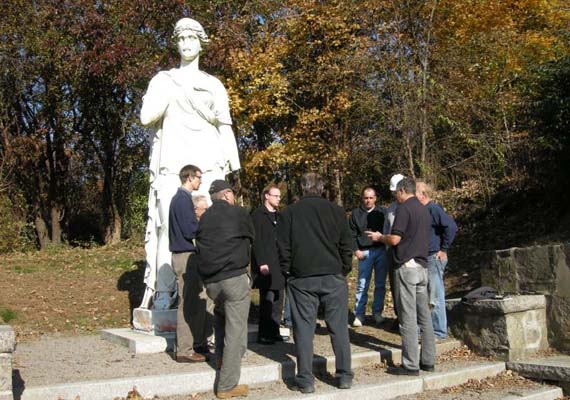Relocation and conservation of a Roman sculpture of the goddess Juno, early second century A.D.:
2011, Examination
Extensive documentation and examination are required in determining best methods and in devising a plan for the move. Firstly, the dimensions are roughly mapped out.
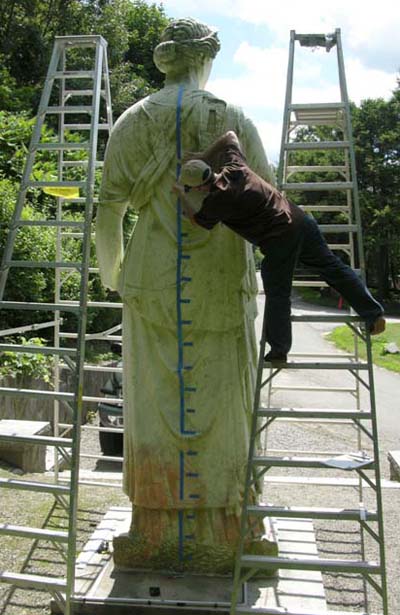
Conservators take various samples from the stone for petrological examination of cross sections and stable isotope analysis. The results will not only clarify if the head, arm, and torso are of the same type of stone, but may also help to identify the exact type of marble and perhaps even the quarry from whence it came. (The pink discoloration at the base of the figure (visible in the above) will also require further analysis to uncover the cause of its formation.)
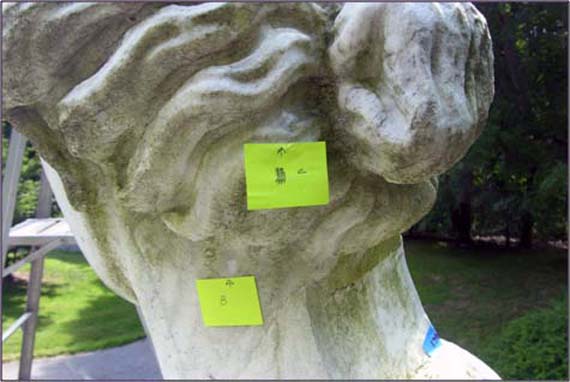
Industrial gamma-radiography is performed (by Baker Testing Services, Inc.) in an attempt to assess the extent of the crack at the sculpture’s waist and to examine the size and depth of existing iron pins used in past repairs. Below is the proper left lower arm, previously reattached with an iron bracket at its bottom edge.
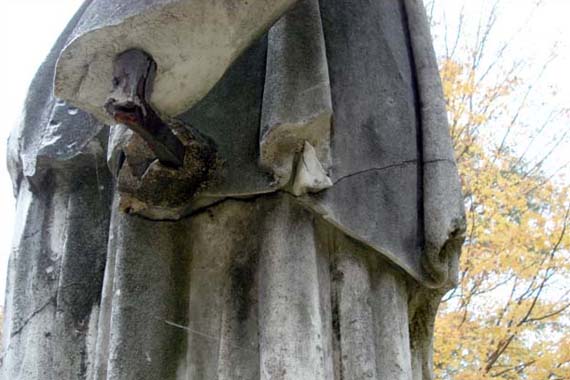
The radiograph of the repair shows the iron bracket set into the arm and body.
[[{"fid":"699251","view_mode":"default","fields":{"format":"default","field_title[und][0][value]":"","field_alt[und][0][value]":"","field_description[und][0][value]":"","field_description[und][0][format]":"full_html","field_folder[und]":"42059"},"type":"media","attributes":{"height":"380","width":"570","class":"media-element file-default"}}]]
Ground penetrating radar is also employed to ascertain whether metal pins were used for installation of the figure onto the granite base at the Brandegee Estate. Due to the amount of stone that needed to be penetrated, not all of the results provided full or satisfactory insights.
Examination continues with 3D laser scanning (by WSP Sells, Inc.), which will allow conservators to study a three-dimensional model of the sculpture.
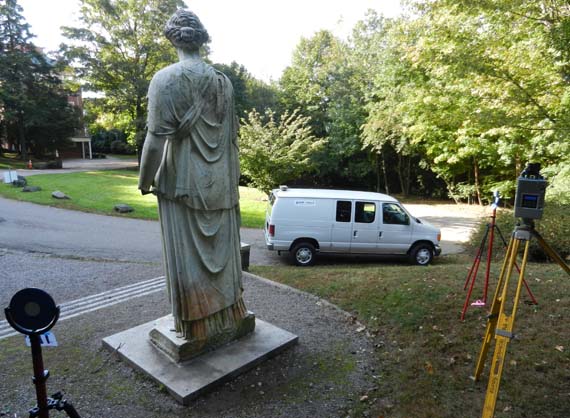
The computer model aids in the visualization of weak areas at the lower part of the sculpture, where the narrow ankles support the weight of the large torso. The 3D model also helps in determining where rods should be inserted to stabilize the deep crack at waist level.
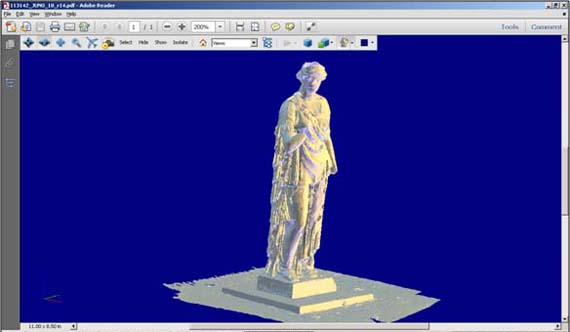
Throughout 2011, a multi-discipline team, including conservators, conservation engineers, facilities crews, structural engineers, riggers, steel manufacturers, masons, and other industrial services staff, convene regularly onsite to develop and fine-tune approaches to stabilize and prepare the sculpture for transport.
